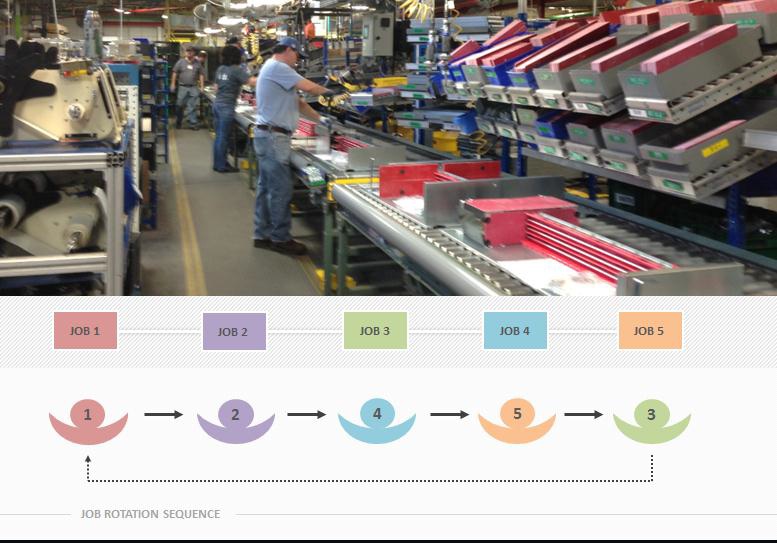Job design may be defined as the function of specifying the work activities of an individual or group in an organizational setting. Its objective is to develop job structures that meet the requirements of the organization and its technology and that satisfy the jobholder’s personal and individual requirements. Exhibit TN4.1 summarizes the decisions involved. These decisions are affected by the following trends:
- Quality control as part of the worker’s job. Now often referred to as “quality at the source”, quality control is linked with the concept of empowerment. Empowerment, in turn, refers to workers being given authority to stop a production line if there is a quality problem, or to give a customer an on-the-spot refund if service was not satisfactory.
- Cross-training workers to perform multiskilled jobs. As companies downsize, the remaining workforce is expected to do more and different tasks.
- Employee involvement and team approaches to designing and organizing work.
This is a central feature in total quality management (TQM) and continuous improvement efforts. In fact, it is safe to say that virtually all TQM programs are team based. - “Informating” ordinary workers through e-mail and the Internet, thereby
expanding the nature of their work and their ability to do it. In this context, informating is more than just automating work—it is revising work’s fundamental structure. Northeast Utilities’ computer system, for example, can pinpoint a problem in a service area before the customer service representative answers the phone. The rep uses the computer to troubleshoot serious problems, to weigh probabilities that other customers in the area have been affected, and to dispatch repair crews before other calls are even received. - Extensive use of temporary workers. Manpower, a company specializing in providing temporary employees, has over 1.9 million temporary employees worldwide on its payroll.
- Automation of heavy manual work. Examples abound in both services (one-person trash pickup trucks) and manufacturing (robot spray painting on auto lines). These changes are driven by safety regulations as well as economics and personnel reasons.
- Most important of all, organizational commitment to providing meaningful and rewarding jobs for all employees. Companies featured on Fortune magazine’s
“100 Best Companies to Work For” use creative means to keep employees satisfied, and offer generous severance and compassion when cuts must be made.

from:
t e c h n i c a l n o t e f o u r
J O B D E S I G N A N D W O R K
M E A S U R E M E N T
